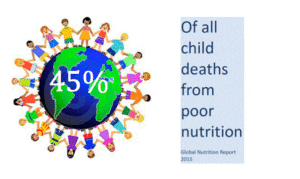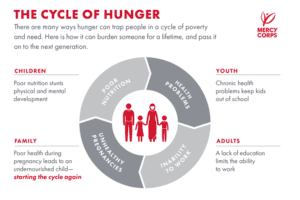Africa
The Vulture and the Little girl: The stark reality of Poverty, Hunger and Child Malnutrition

In the contemporary world, the naturally most advanced creation, human beings are delimited by numerous adversaries and miseries. Amidst such unwelcoming adversaries, poverty, hunger, and malnutrition are the biggest threat to the human race. Taking a cue from such rarest of rare demons and difficulties, I will love to pen down a beautifully narrated and highly acclaimed incident from the third world country named South Sudan in Africa.
The memorable event, The vulture and the little girl, also known as “The Struggling Girl”, is a photograph by Kevin Carter which first appeared in The New York Times on 26 March 1993. It is a photograph of a frail famine-stricken boy, initially believed to be a girl, who had collapsed in the foreground with a vulture eyeing him from nearby. The child was reported to be attempting to reach a United Nations feeding center about a half mile away in Ayod, Sudan,(now South Sudan), in March 1993.
In 1993, Kevin Carter snapped the now famous photo in South Sudan while covering the famine plaguing the country, as well as the international relief efforts in response. When the picture first appeared in The New York Times, it ignited a firestorm that included both condemnations and congratulations for Carter. Most notably, the photo won him the 1993 Pulitzer Prize for Feature Photography. Not long after, Carter committed suicide, unable to process the horrors he had witnessed in South Sudan. His end adds yet another layer of tragedy to this somber tale.
While on the way to a United Nations feeding center, a young boy – initially mistaken for a girl – had stopped to rest, exhausted by starvation. As his parents had likely gone ahead to collect food, the emaciated child lay vulnerable, attracting the attention of a vulture. Many people are familiar with this picture from the South Sudan famine, but few know that the tragedy reaches far beyond the picture itself – it extends to the photographer, Kevin Carter.
Putting aside the allegations and agitations of the picture and tale, one thing which must mull over in the current scenario is that whatever may be our miraculous achievement in every walk of life by the human beings, still the stigma of hunger and malnutrition prevails and persists across the globe. By no means, the people of third world countries have made themselves free out of its grief grip. To substantiate our discussion, we must make a detailed study of hunger and malnutrition.
Hunger defines a short-term physical discomfort as a result of chronic food shortage, or in severe cases, a life-threatening lack of food. (National Research Council, 2006)
World hunger refers to hunger aggregated to the global level. Related terms include food insecurity and malnutrition. Food insecurity refers to limited or unreliable access to foods that are safe and nutritionally adequate (National Research Council, 2006). Malnutrition is a condition resulting from insufficient intake of biologically necessary nutrients (National Research Council, 2006). Although malnutrition includes both overnutrition and undernutrition, the focus for global hunger is undernutrition.
Malnutrition rates remain alarming: stunting is declining too slowly while wasting still impacts the lives of far too many young children.

Nearly half of all deaths in children under 5 are attributable to undernutrition; undernutrition puts children at greater risk of dying from common infections, increases the frequency and severity of such infections, and delays recovery. We are still far from a world without malnutrition.
Measures of child undernutrition are used to track development progress. In the Post-2015 Development Era, estimates of child malnutrition will help determine whether the world is on track to achieve the Sustainable Development Goals – particularly, goal 2 to “end hunger, achieve food security and improved nutrition, and promote sustainable agriculture”.
Poverty, Hunger, and Malnutrition:
Child malnutrition hurts cognitive function and contributes to poverty by impeding people’s ability to lead productive lives. Poverty is the leading cause of hunger, but poverty also results from hunger, in a cyclical relationship. In spite of the importance of childhood nutrition and significant progress in the last 25 years, global childhood hunger is still rampant.
- According to WHO sources, Overall, 5.6 million children under age five died in 2016, nearly 15,000 daily. The risk of a child dying before five years of age is highest in Africa (76.5 per 1000 live births), about 8 times higher than in Europe (9.6 per 1000 live births)
- As per the report of UNICEF approximately 3.1 million children die from undernutrition each year ). Hunger and undernutrition contribute to more than half of global child deaths, as undernutrition can make children more vulnerable to illness and exacerbate the disease.
- Children who are poorly nourished suffer up to 160 days of illness each year. Undernutrition magnifies the effect of every disease including measles and malaria. The estimated proportions of deaths in which undernutrition is an underlying cause are roughly similar for diarrhea (61%), malaria (57%), pneumonia (52%), and measles (45%) Malnutrition can also be caused by diseases, such as the diseases that cause diarrhea, by reducing the body’s ability to convert food into usable nutrients
- 66 million primary school-age children attend classes hungry across the developing world, 23 million who live in Africa, which greatly impacts their ability to learn (World Food Programme [WFP].
 Source: Mercy Corps, 2018
Source: Mercy Corps, 2018
Every year Welthungerhilfe together with Concern Worldwide publishes world hunger Index to make aware of the impoverished and malnourished. Still, crores of children die out starvation and deprived of basic amenities. Rich nations instead of increasing their imperialism must pay attention to such vulnerable and gut-wrenching issues. It is a wakeup call for all of us.






























Sanjay Kumar pal
May 26, 2019 at 2:13 PM
Really Heart touching….